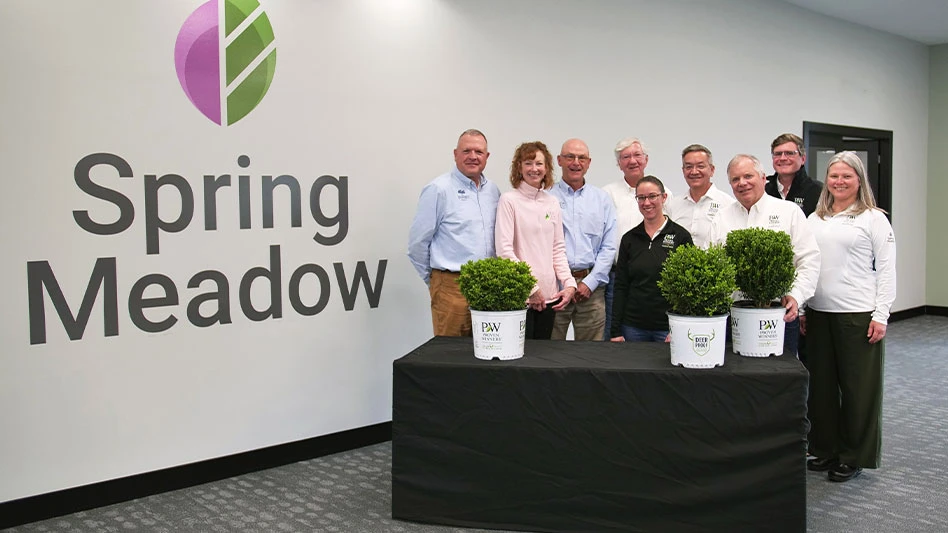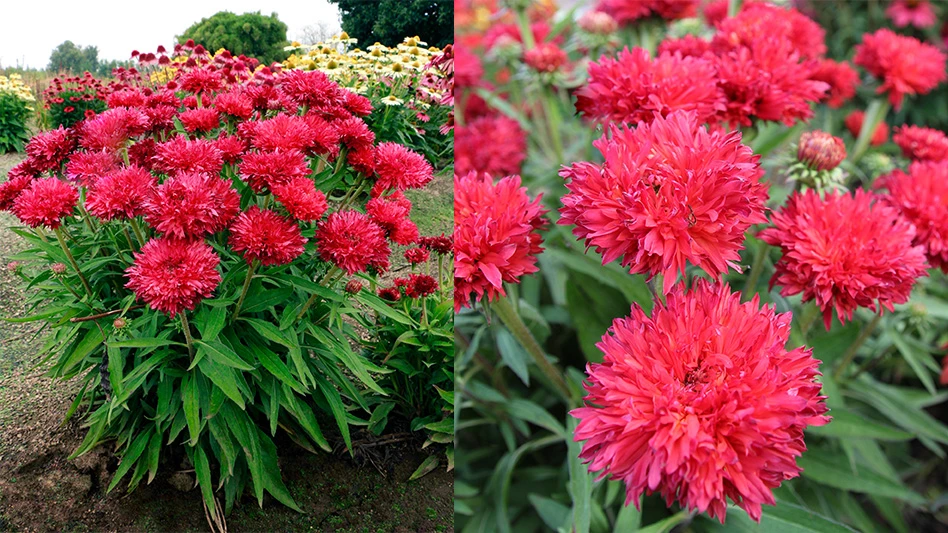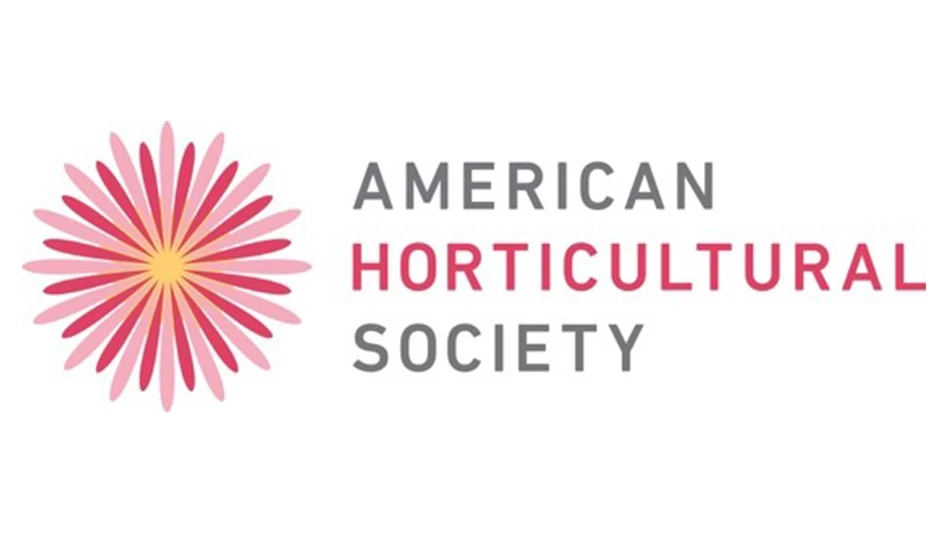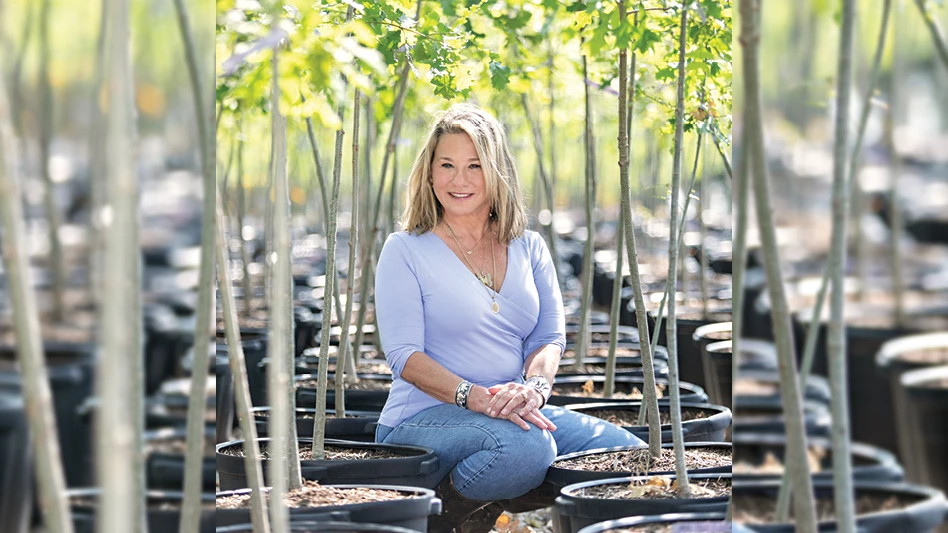 A relatively new insect is appearing on crape myrtles (Lagerstroemia) across the Southeast. The insect was first noticed in McKinney, Texas, a north Dallas suburb, in 2004. At that time, entomologists suggested it was morphologically identical to azalea scale (Eriococcus azalea), but noted that molecular investigation might eventually identify it as E. lagerstroemiae, known to be a pest on crape myrtle and pomegranate in Asia. Although the exact taxonomy is still not known, it is most commonly referred to as crape myrtle bark scale (CMBS).
A relatively new insect is appearing on crape myrtles (Lagerstroemia) across the Southeast. The insect was first noticed in McKinney, Texas, a north Dallas suburb, in 2004. At that time, entomologists suggested it was morphologically identical to azalea scale (Eriococcus azalea), but noted that molecular investigation might eventually identify it as E. lagerstroemiae, known to be a pest on crape myrtle and pomegranate in Asia. Although the exact taxonomy is still not known, it is most commonly referred to as crape myrtle bark scale (CMBS).
Since its initial sighting, the insect has been spreading across the Southeast at an alarming rate. The insect had spread throughout most of the Dallas-Fort Worth, Texas, area by 2010. The scale was reported in Ardmore, Okla., and Shreveport, La., in 2012 and Houma, La. (60 miles southwest of New Orleans) in 2013. In October 2013, the insect was confirmed in Germantown, Tenn., (near Memphis) and in Little Rock, Ark., in January 2014.
Heightened concern about this new pest is based on the speed at which it spreads and the common use of crape myrtles in landscapes across the U.S.
Signs of infestation
Crape myrtle bark scale is easy to identify because in the U.S., it is the first and only bark scale to occur on crape myrtles. The adult females appear as white or gray felt-like encrustations on small twigs to large trunks, often near pruning wounds or branch crotches on older wood. On the most current growth and under heavy infestation, distribution may be more uniform. CMBS is approximately 2 mm long.
|
More research in the works Gary W. Knox of the University of Florida, Quincy, received a grant from the Center for Applied Nursery Research to screen for susceptibility of crape myrtle taxa to crape myrtle bark scale (CMBS). Objectives of Knox’s research include:
|
Careful examination may reveal dozens of pink eggs or crawlers under some of the larger white scale covers. Most gardeners will be alerted to CMBS by black sooty mold on the bark. This may confuse the diagnosis because black sooty mold is often associated with aphids. This felt scale is not classified as either an armored or soft scale.
Life cycle
As female nymphs mature, they secrete white threads that become felted or matted into a thick, whitish to grayish scale. Adult females under this covering are wingless and sessile. For this species of scale, eggs are laid under the covering (probably late April to mid-May in Arkansas) and the female then dies. When the eggs hatch into first instar nymphs, these nymphs have legs and antenna and are mobile, thus the term crawlers. These crawlers emerge from under the “‘mother scale” and disperse over a short period (one to two days). This emergence occurs beginning mid-May to early June in Arkansas; however, crawlers were observed on a warm day in January 2014. After the first molt, nymphs lose their legs and antenna and become sessile. During the last instar, males are quiescent (pupal type stage) and develop external wings. Upon emergence, males find a sessile female and mate, completing the life cycle.
Sources:
James Robbins, professor and extension horticulture specialist – Ornamentals and John Hopkins, associate professor and extension entomologist – Urban, University of Arkansas; Mike Merchant professor and extension urban entomologist and Mengmeng Gu assistant professor and extension ornamental horticulturist, Texas A&M AgriLife Extension Service.
Get curated news on YOUR industry.
Enter your email to receive our newsletters.
Explore the February 2014 Issue
Check out more from this issue and find your next story to read.
Latest from Nursery Management
- The HC Companies, Classic Home & Garden merge as Growscape
- Eason Horticultural Resources will now officially be known as EHR
- BioWorks receives EPA approval for new biological insecticide for thrips, aphids, whiteflies
- Ellen Mackenbach-Lakeman appointed new CEO of Dümmen Orange
- Southern Garden Tour sets 2025 dates for trial garden open houses
- New book explores plants that thrive in Rocky Mountains
- American Floral Endowment establishes Herman Meinders Memorial Tribute
- These companies are utilizing plastic alternatives to reduce horticultural waste






